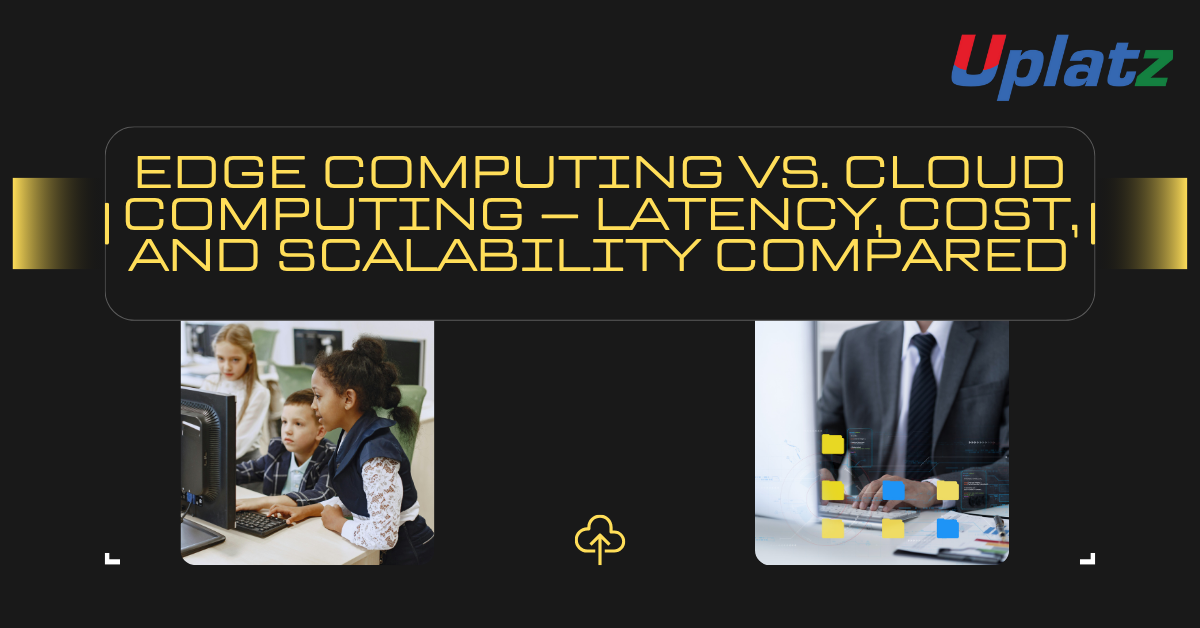Edge Computing vs. Cloud Computing – Latency, Cost, and Scalability Compared
Edge computing and cloud computing represent complementary approaches to distributed computing, each optimized for different requirements in latency, cost, and scalability.

- Latency
Edge computing reduces the round-trip time between data generation and processing by locating compute resources near the data source, often achieving sub-50 ms latency for time-sensitive applications. By processing data locally on edge devices or nearby micro data centers, network hops and physical distance are minimized, resulting in faster response times for IoT sensors, autonomous systems, and real-time analytics . In contrast, traditional cloud computing routes data through geographically distant centralized servers, which can introduce latencies ranging from 100 ms up to 1,000 ms depending on network congestion and routing efficiency. Measurements indicate typical cloud application latencies of 500 ms to 1,000 ms for remote processing tasks, whereas equivalent workloads at the edge complete within 100 ms to 200 ms .
- Cost
The cost structure of edge computing is characterized by higher upfront investments in hardware, on-site installation, and specialized maintenance, but it lowers ongoing bandwidth and data transfer fees by processing most data locally. Energy consumption and local infrastructure support add operational expenses, yet savings accrue through reduced reliance on high-volume cloud data egress charges . Cloud computing, by comparison, offers minimal initial setup costs via subscription-based or pay-as-you-go models, allowing organizations to start small and expand over time. However, the cloud’s ongoing costs can escalate with large volumes of data transfer, storage, and compute cycles, especially when applications continuously stream raw data for centralized processing.
| Cost Component | Edge Computing | Cloud Computing |
| Initial Investment | High (hardware, installation) | Low (subscription-based) |
| Operational Expenses | Local maintenance, energy | Usage-based fees for compute, storage, and egress |
| Data Transfer Costs | Low (local processing) | High (remote data movement) |
| Maintenance Staffing | On-site specialists | Remote support, fewer on-site staff |
- Scalability
Cloud computing excels at scalability through virtually unlimited virtual resources, automated provisioning, and on-demand elasticity. Modern cloud platforms leverage auto-scaling, load balancing, and container orchestration to adjust compute and storage capacity in real time according to workload demands, ensuring consistent performance during traffic spikes. In contrast, edge computing scalability depends on the deployment of additional physical nodes or devices at new locations, requiring manual provisioning and coordination. While edge infrastructures can be modular and support localized growth—ideal for geographically dispersed IoT deployments—they lack the instantaneous, virtually limitless scaling inherent in centralized cloud environments.
Conclusion
The choice between edge and cloud computing hinges on application requirements for latency, cost control, and scalability. Edge computing is the clear winner for ultra-low latency and bandwidth-sensitive workloads, albeit with higher upfront investments and on-site maintenance. Cloud computing remains unmatched for rapid, elastic scaling and lower initial costs, though its ongoing data transfer fees and higher latencies can be limiting for real-time scenarios. A hybrid strategy that combines local edge processing with centralized cloud services often delivers the optimal balance of performance, cost efficiency, and growth flexibility.
